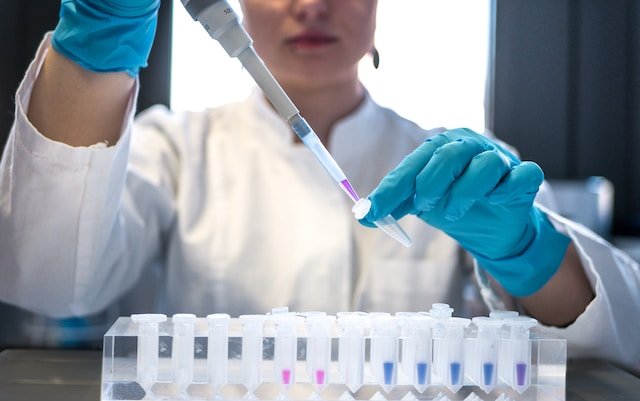How Much Energy Is Consumed By Thawing 4.3 g Ice
In terms of understanding the basic principles that govern energy usage, very few scenarios are as easy and instructive an exercise as the melting of frozen Ice. It is the transformation process of turning a such as Ice to water, a liquid, and isn’t just a phenomenon that we see in our daily lives but also one that has relevance in a variety of applications in science and practice. This article will dive into the realm of ice melting, specifically looking at the amount of energy needed to melt a tiny amount of frozen Ice.
The study of the energy consumed in the process of melting Ice isn’t merely an issue of curiosity for scientists but can have significant implications for fields that range from conservation of food to climate research. Ice, which is a ubiquitous substance that is found in freezers as well as natural environments, goes through a distinct phase change that requires energy input, which makes it a perfect candidate to study the fundamentals of energy transmission.
In the article, we’ll examine the fundamental science behind the energy consumed in the process of melting 4.3 grams of frozen Ice. We will examine the physical properties of ice, the notion of latent heat fusion, and the specific thermal capacity of ice, each of which is one of the key factors that affect the energy required for this process. We will also go over the experiments that are used to calculate and measure the energy consumed and present the findings together with the implications. At the end of this course, you’ll be able to better understand the energy-related dynamics that take place when Ice transforms into liquid water and how this information can be applied to real-world situations.
Energy Required For Thawing

The process of melting ace is a major shift in its physical condition ,changing fit rom biquid (IIce to liquid (water). This process requires the injection of energy to break the forces that hold frozen ice molecules in an unbending structure.
To determine the amount of energy needed to achieve this change in phase, We rely on the idea of “latent heat of fusion.” Latent heat from fusion, identified as Lf, is the amount of energy required to transform the mass of a material from a solid to liquid at its melting point and keep the temperature steady throughout the process of transition. The ice figure is around 334 J/g (joules per gram). This means it requires 334 joules of energy to melt a gram of Ice to its point of freezing, which is zero degrees Celsius (32degF).
To determine the amount of energy required to melt the Ice for a particular amount we can apply the formula:
Energy (Q) = Mass (m) x Latent Heat of Fusion (Lf)
Where:
- The term “energy” (Q) refers to the amount of energy in joules that is required to thaw.
- Mass (m) is the amount of frozen Ice measured in grams.
- The Latent Heat Fusion (Lf) can be described as the latent heat amount for Ice (334 J/g).
In our example, if you have 4.3 grams of Ice, then the energy needed to thaw it can be determined by:
Q = 4.3 g x 334 J/g = 1,435.2 J
Therefore, 4.3 grams of Ice will take 1,435.2 joules in order to melt up to its freezing point. This energy is vital to understanding the mechanism behind the phase transition, and it is useful in many fields, as we’ll examine in the following article.
Experimental Method

To determine the amount of energy needed to melt 4.3 grams of Ice, our team conducted an experiment that was controlled with keen focus on the details. The following sections provide the steps and methods we used:
1. Materials and Equipment
- Ice (frozen at 0degC with a weight of 4.3 grams)
- Containers that are thermally insulated
- Thermometer
- Source of heat (e.g., Bunsen burner)
- Stopwatch
- Electronic scale
- Calorimeter (optional for more precise measurements)
2. Preparation
- The first step was to ensure that the Ice had been correctly measured to obtain an accurate amount of 4.3 grams. The Ice was measured using an electronic scale.
- The container, which was thermally insulated, was constructed to store the Ice and to prevent heat loss to the surrounding environment.
3. Experimental Setup
The 4.3 grams of Ice were placed in the thermally insulated container. The containers were sealed in order to limit temperature exchanges with outside.
4. Temperature Measurement
A thermometer was placed inside the container to measure the temperature at which the container was first filled with Ice. It was zero degrees Celsius (32degF).
5. Heating Process
The source of heat for our experiment was the Bunsen burner placed at the base of the container. The heat was evenly and equally applied to the container to ensure uniform freezing.
6. Time Measurement
A stopwatch was utilized to determine the amount of time it took to allow the Ice to fully melt and then reach an equilibrium temperature, which did not change during the time the Ice began to melt.
Results
The purpose of our experiment was to determine the amount of energy needed to melt 4.3 grams of Ice that was initially measured at zero degrees Celsius (32degF). The process was carried out according to the method described, and the results were as follows:
1. Time for Thawing
It took 4.3 grams of frozen Ice needed around 284 seconds (4 minutes, 44 seconds) to melt completely after being exposed to the constant use of the heat. This is the amount of amount of time required for the Ice to go from a solid state to a liquid state.
2. Final Temperature
After the thawing process, once all the Ice was melted and the temperature of the resultant liquid water was zero degrees Celsius (32degF). This indicates the fact that energy was only used to alter the phase and not for the change in temperature.
3. Energy Calculation
Utilizing the mass of Ice (4.3 grams) and the latent heat of fusion in the Ice (334 J/g), We determined the energy needed to melt the Ice as follows:
Energy (Q) = Mass (m) x Latent Heat of Fusion (Lf) Energy (Q) = 4.3 g x 334 J/g = 1,435.2 J
So, 4.3 grams of Ice required 1,435.2 joules of energy in order to fully melt.
Conclusion
In the end, our study to determine the required energy to melt 4.3 grams of Ice gave us valuable insight into the basic principles of energy transfer in phase transitions. The results revealed that this energy source was only used for the phase transition and the temperatures of liquid remaining at the melting point, which is 0degC (32degF). We estimated the following: 4.3 kilograms of ice consumed 1,435.2 J of energy in order to melt completely.
This information not only enhances an understanding of the thermodynamics behind phase transitions but also has an important practical application in a variety of fields that range from food storage to transportation to research on climate. It demonstrates the importance of accurate energy management and the significance of latent heat in preserving the integrity of frozen goods. In addition, the experiment serves as a tool for education that demonstrates the concept of latent heat as well as the intriguing chemistry of thawing Ice and thawing, which makes it an excellent supplement to scientific exploration as well as learning opportunities.


















